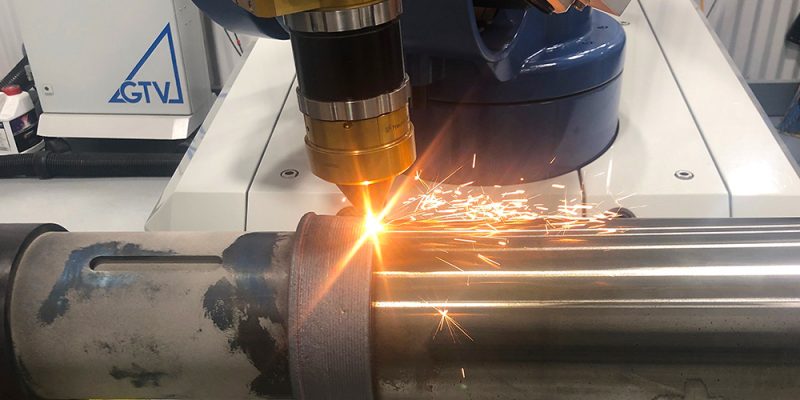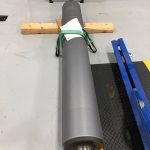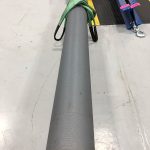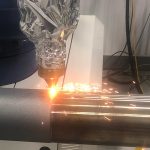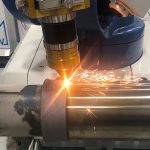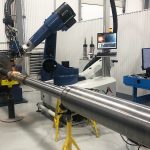Laser Cladding is a technique for welding one metal to the surface of another metal through the coaxial delivery of a stream of metallic powder and a highly focused laser beam. It is widely used in industrial applications or parts repair and surface coating.
Instead of trashing a part that costs tens or hundreds of thousands of dollars, expensive parts can be repaired and kept in service with laser cladding and be brought into spec for a fraction of the cost of replacing the part. Laser Cladding can be used to repair anything from a small imperfection to the application of an inch-thick wear-resistant surface.
There are many applications for Laser Cladding
Laser Cladding has many potential applications besides industrial parts repair.
With other methods of welding or cladding, choices of metals are limited. A welder usually must use the same metal as the base metal. Not so with laser cladding which can weld nearly any metal or alloy to the base metal: 420 Stainless, tool steel, Stellite (a range of cobalt-chromium alloys), P20, H13, Waspaloy or nearly any material desired.
Laser cladding also has a lot of flexibility when it comes to automation. Cladding is done via coaxial delivery: the powder and the laser are delivered on the same axis, moving at the part in exactly the same direction. Once programmed, a robot can deliver the laser cladding perfectly every time.
It can also replace nitriding. Instead of imbuing a surface metal with nitrogen via gas, salt bath or plasma, an alloy of choice can be applied via laser cladding with an extremely low heat affected zone with no change to the structure of the base metal.
Laser cladding can potentially be used in the design and manufacture of parts to save costs on materials. For instance, a cutting blade could be designed with a “hard enough”, inexpensive tool steel. Then an alloy or metal with excellent strength and cutting capabilities could be added with laser cladding. This would not only reduce the cost of the materials but save on machining as well, as the base metal is easier to cut.
An example of industrial parts repair with laser cladding
A client of Alpha Laser had a problem with a hydraulic twin pullback ram for their very large forging press which makes crankshafts. The diameter of the shaft of the ram was out of spec by .035”. The ram performed a critical operation in the forge and its dimensions had to be perfect so they asked Alpha Laser to bring it back into spec via laser cladding.
The base metal of the shaft was 4140 alloy steel. Alpha Laser welding technicians added .060 – .070” of 4130 alloy steel to the shaft. Then the ram was returned to the client for post-weld machining to bring its diameter into spec.
In the video below, the robot arm with the laser head is firing the laser and adding the powder at the same time. The powder melts in a pool on the surface and hardens immediately.

